Top 10 Weird but True Things About the California Gold Rush
To put it simply, the California Gold Rush was (surprise, surprise) a gold rush that began on January 24, 1848, and brought people from the rest of the United States and abroad to California in hopes of getting a good chunk of wealth for themselves.
Often times, we just assume the best this or that was the first, in this case, the best gold rush in the USA. While the California Gold Rush was by far the more memorable gold rush the United States had, it was not the first one. That was about fifty years beforehand, and it was in North Carolina. About 30,000 people surged into North Carolina after a seventeen pound gold nugget was found in Cabarrus County.
What does that have to do with anything? Well, it's kind of complicated. In 1852, about 92% of the people prospecting for gold were men. The few women who did travel to the west looked for a living in the boomtowns, working in restaurants, bars and hotels that were everywhere. Women back in the east were afraid of the trouble the men might get into without the influence of women, published stories and ran advertisements directed at educated, young women with good ethics to travel west to tame these men. Few took them up on this offer. The percentage of women in gold mining groups did grow a bit, but even in 1860 they numbered fewer than 19 percent. And this resulted in the spreading of homosexuality and gay culture in the mines. I could elaborate, but I think it's best I don't.
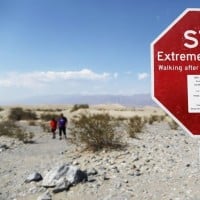
Yeah, the valley that sounds like it was derived from Psalm 23:4 (that's the verse about the valley of the shadow of death) did not get its ominous name because a Christian discovered it, or something (although it is possible that the Bible verse brought up previously has at least small connection to Death Valley.) It mainly got its ominous title when 13 prospectors died while crossing a desert valley in eastern California. The valley received its name as the "Death Valley" after they died of heat strokes, making it literally a valley of death.
The California gold rush is considered one of the largest mass migrations in American history. In March 1848, the population of what was then the just native American territory (later to become the state of California) was a 157,000; 150,000 Native Americans, 6,500 of Hispanic descent, and less than 800 white men. By the mid 1850s, after a gigantic increase of settlers, there were more than 300,000 new arrivals, and one in every 90% in the United States was living in California.
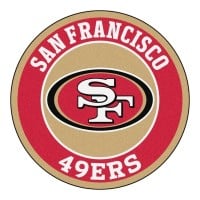
We all know the American football team, the San Francisco 49ers, but what is a 49er? The term "forty-niners" alludes to about 300,000 immigrants who arrived in California in covered wagons, clipper ships (that could is how we got the "Los Angeles Clippers," basketball team,) and on horseback and staked claims to parts of land around the river to extract gold from. They are named "forty-niners" for the year they started to arrive in California on: none other than 1849.
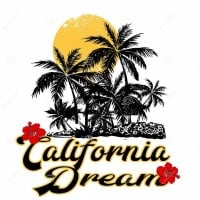
The gold rush led to the concept of the "California Dream," which is associated with the thought of getting rich quick. If you asked your dad what the California Dream is, and asked your grandfather what it is, you'd get two very different answers. You're grandfather would tell you that the California Dream is how you could get rich fast, back in the day as this California Dream got defined during, the gold rush. You're dad might say that it's something that has lost its meaning, or simply say he doesn't know. Your grandfather would be right about what the California Dream is.
The phrase "to pan out" has its origins in the California gold rush and the utilization of "placer mining," where one a gold miner carefully spins around a metal pan filled with river sediment, hoping to find a dot of gold that would hit the bottom of the pan.. When one a miner would find gold at the bottom of the pan, then it was said that it literally "panned out." In modern day, something panned out is something finished or concluded. Interesting how the term changed a bit.

California was the one place that women could earn more money than men for doing the same job. Given women were few and far between each other in California, to begin with, men would often pay women to work with them just for the presence of a female or, pay them to do chores that they didn't know how to do themselves, or jobs that were considered "women's work." One woman supposedly made over $18,000 by baking pies, and nothing else.
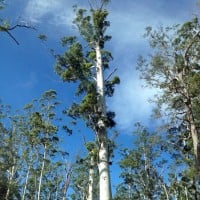
The gold rush led to a huge demand for timber, building materials, and fuel, which, in turn, led to an enormous deforestation of California's woodlands. One of the solutions to problem was to bring eucalyptus seeds from Australia to California and plant forests of these trees that grow six feet a year, and can grow up to 30 feet tall, and while you mostly see California red woods in California, eucalyptus trees can still be found here and there.
Two brothers mined $1.5 million worth of gold in a single year. John and Daniel Murphy arrived in the Sierra Nevada in 1848 and struck gold within days. In a year, they mined $1.5 million worth of the precious metal, about $40 million today.
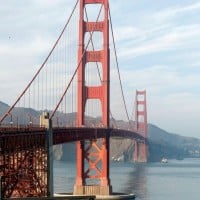
"Seriously?" Yes, seriously. The Golden Gate Bridge in San Francisco was not named after the California gold rush. About two years prior to the discovery of gold at Sutter's Mill, the golden gate bridge just so happened to be titled "the Golden Gate" because it was viewed as the "golden gate to trade with the Orient, or the region.
I always assumed that it was named after that. By the way, great list!
I can't find anything on this one.